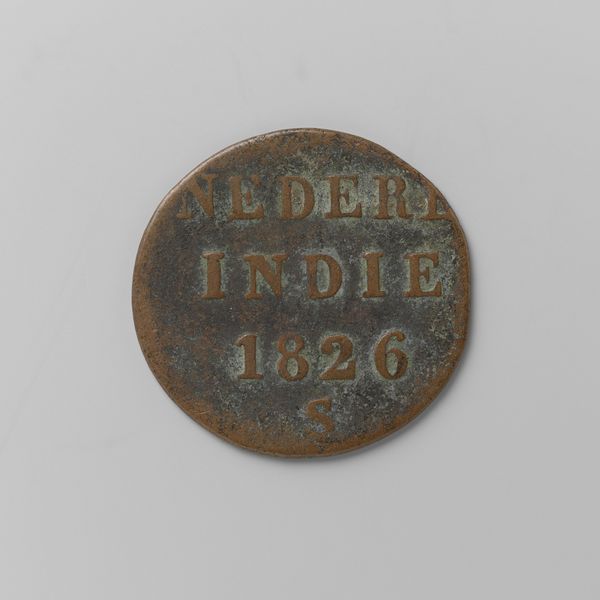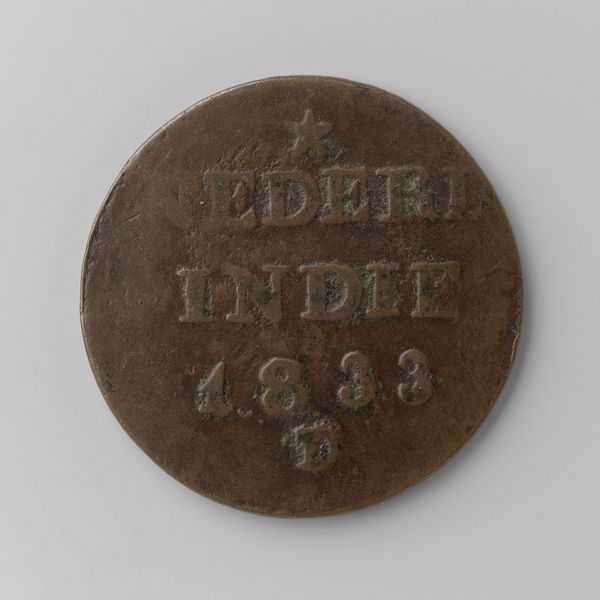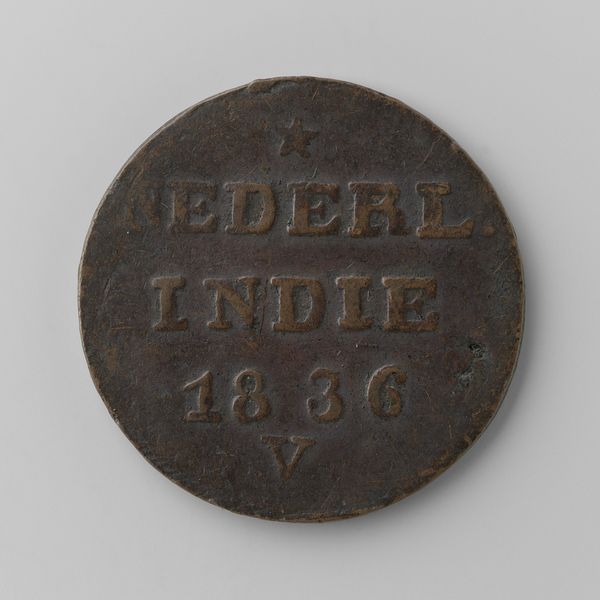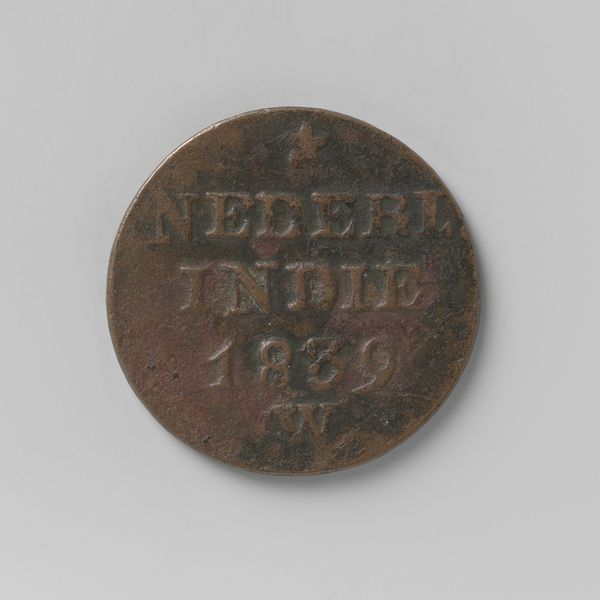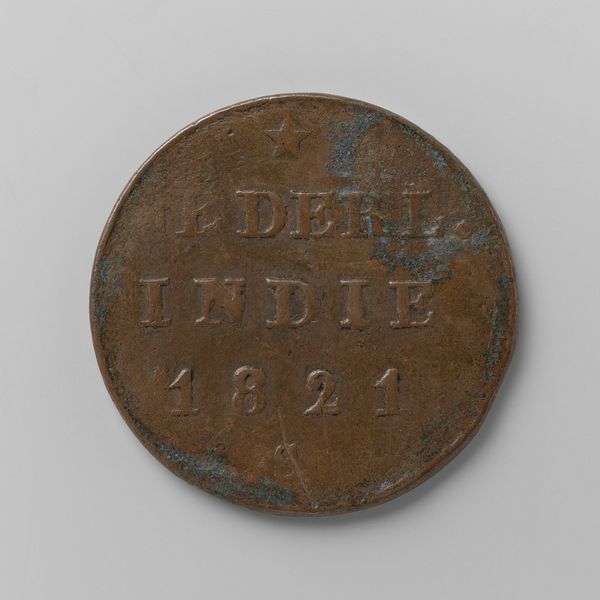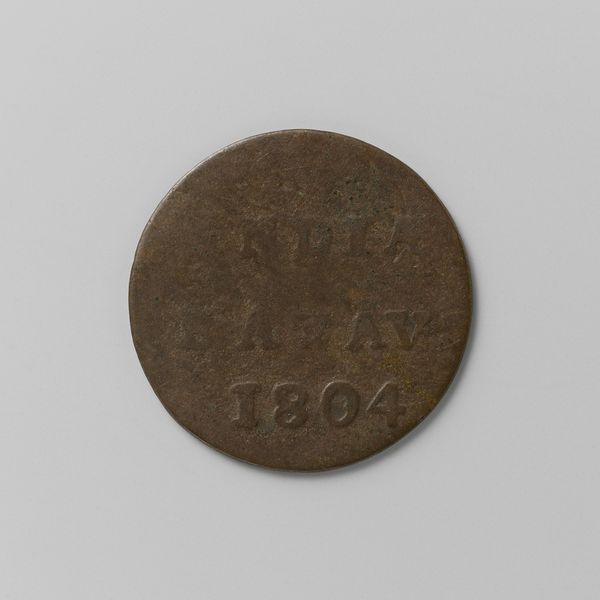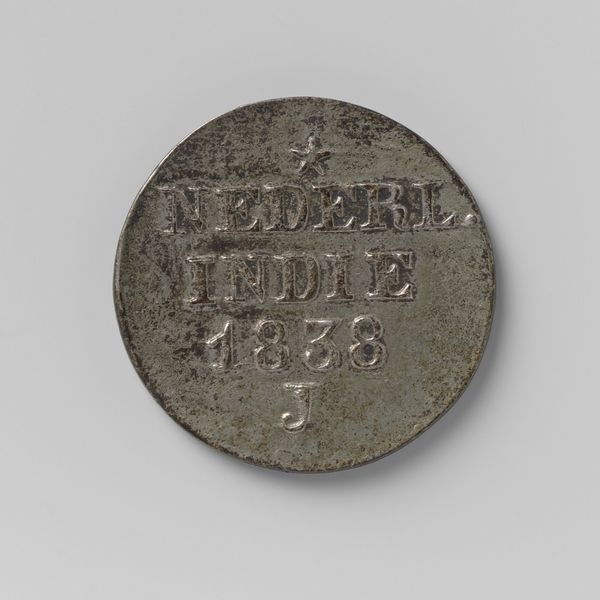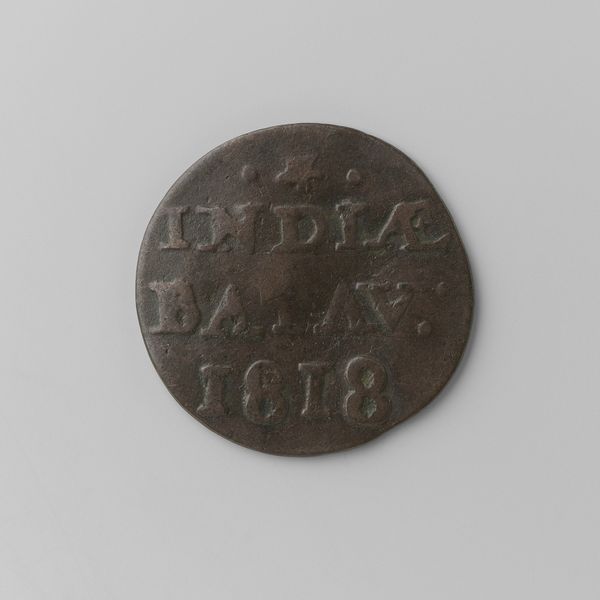
print, metal, engraving
#
dutch-golden-age
# print
#
metal
#
appropriation
#
engraving
Dimensions: diameter 1.8 cm, weight 1.46 gr
Copyright: Rijks Museum: Open Domain
This is an 1824 coin, a one-eighth stuiver, made of copper for use in the Dutch East Indies during the reign of Willem I. It's a humble thing, but consider the material: copper, a metal extracted from the earth, smelted and refined through intense labor. And think about the inscription, pressed into the coin's surface: “Nederl. Indie,” proclaiming Dutch dominion. A seemingly simple object becomes a potent symbol of colonial power, embedded in systems of extraction, production, and control. Coins like these were produced in vast quantities, each one passing through countless hands, facilitating trade and reinforcing economic structures. It's a reminder that even the smallest, most mundane objects can carry immense historical weight, embodying the complex relationships between materials, labor, and social context. It asks us to consider the artistry behind its production, in conjunction with wider issues of labor, politics and consumption.
Comments
No comments
Be the first to comment and join the conversation on the ultimate creative platform.
